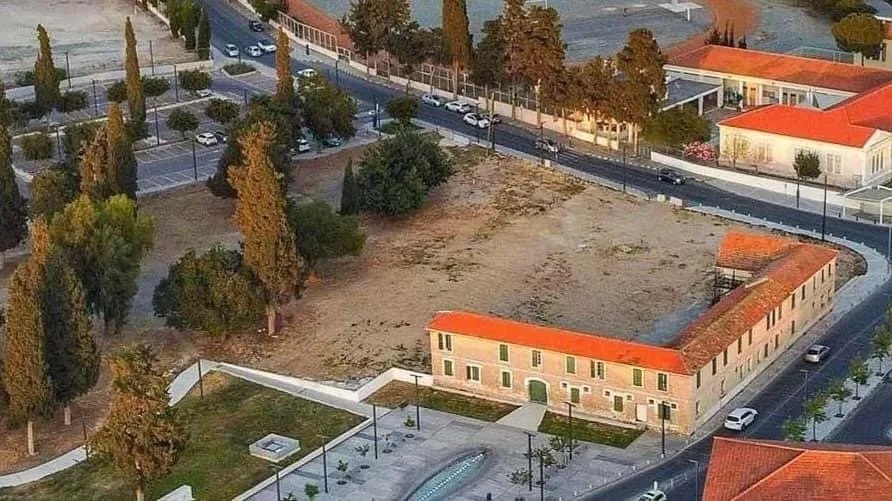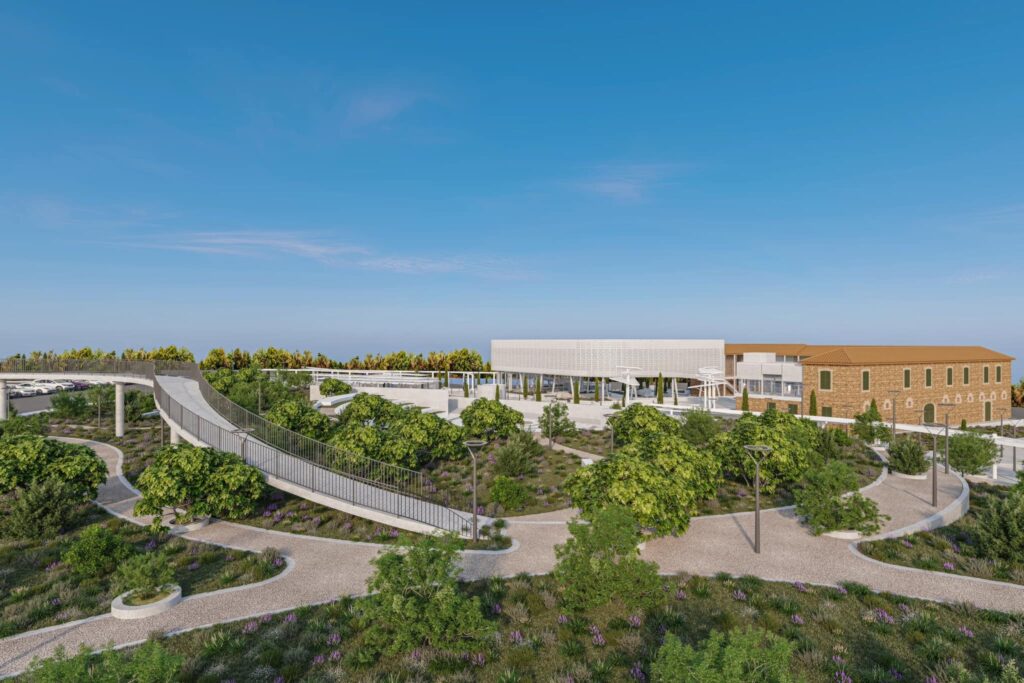Filenews 26 August 2024 - by Dora Christodoulou
With an expenditure of almost €10 million, in the heart of the Paphos shopping centre the works that the Pafos Historical Documentation Centre will create in a few months are now in full swing. The new project, which will highlight the history of the city through its important political and social periods, is created in a particularly charged space: in the listed buildings that until a few years ago constituted the Pafos Police Department and during the British occupation the detention facilities of the province.
The project will last 15 months and includes the renovation of the exterior areas of 18.000sq.m. and the maintenance and conversion of the listed building, of 950sq.m. For this purpose, a special museological study was carried out by a group of experts.
The project also attempts to connect the urban environment with the history of the city through a walking route that will start from the north of the area under development where the Armenian Genocide Park is located and a relaxed route with overpasses and ground passes in areas with lush vegetation. Based on this study, the visitor will arrive at the urban square north of the building, which will include urban equipment, living rooms and toilets. From there, the visitor will enter the museum, through a modern building, where he will get to know the history of Pafos from 332 BC until modern times. This tour will take place both through exhibits already collected, as well as through a digital tour.

Katerina Papazacharia, Professor of Modern History at Neapolis University Pafos, analyzes the interesting history of the buildings and the space that will house the Historical Documentation Centre in the future. By decision of May 1879, the Commissioner of Cyprus, with the agreement of the Legislative Council, declared specific places in each city as places of imprisonment. Konak Ktyme was then designated for Pafos Police Station, which housed the Pafos Provincial Police Headquarters, was completed in November 1884, just six years after the annexation of Cyprus to Great Britain. In the same year, the construction of prisoners' cells and police dormitories was completed.
According to testimony from 1884, 16 convicts were moved from Limassol Prison to serve their sentences at the New Police Station and Paphos Prison, Papazacharia explains. The convicts, dressed in short jackets and trousers made of blue cotton woven fabric with a visorless cap, worked from sunrise to sunset in forced labour (breaking stone) but also in transporting garbage of the Station by cart to a point outside the city and cultivating gardens.
According to the academic and member of the committee of experts who studied the new project, there was a place for the execution of convicts by hanging at the Police Station. Outside the station there were stables and toilets. The station also had cars and motorcycles. Students and citizens who participated in the EOKA struggle were detained at the Pafos Police Station.
From Independence in 1960 to 2019, the building continued to be used as Paphos' Central Police Station until it was relocated to new buildings, Papazacharia said.

Highlighting the archaeological, historical and folklore wealth of the city
The Museological team, which won the competition, consists of eight Cypriot and Greek scientists of various specialties, according to the specifications set by the Municipality of Pafos. It is headed by Dr. Ioannis Eliadis, responsible contractor / Museologist, while the team is staffed by Dr. Charalambos Chotzakoglou, Dr. Aikaterini Papazacharia, Spyridon Nasainas, Georgios Kavoulakos, Stamatina Maglara, Panagiotis Tsimpiridis and Theodoros Kakoullis.
The team, Katerina Papazachariou tells "F", after a study, submitted to the Pafos Municipality a detailed guide presenting the organizational chart of the exhibition of the Pafos Historical Documentation Centre, which contains texts of thematic units in a specific number of words and, in order to document and highlight the archaeological, historical, folklore wealth and culture of Pafos, printed visual material illustrating the units, Originals or copies of objects -inside and outside showcases- and mostly digital applications with specific thematic proposals.
